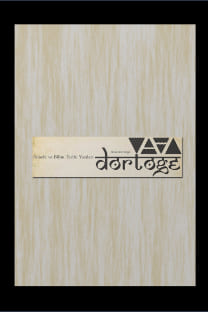Törensellik ve Toplumsal Yaşamın Koreografisi: Malinowski’nin Etnografik Yas Anlatısı
Günümüzde başta sosyal antropoloji olmak üzere merkezinde toplulukların ve topluluk yaşamlarının yer aldığı sosyal disiplinler giderek artan bir eğilimle praksislerin ve akış halindeki toplumsal formların değerini keşfediyor. Bu eğilim toplumsal birlikleri katı bir ‘olma’ gerçekliği yerine Weberci bir paradigma içerisinde bağlamsal ‘oluş-akış’ çerçevesine yerleştiriyor. Bu makalede sosyal antropoloji içerisinde bu eğilimin yetkin bir örneğini sunan James’in toplumsal yaşamın koreografisi kuramını ele alacağım ve Malinowski’nin etnografik çalışmasında ayrıntılı şekilde betimlediği yas töreninde bir tür disiplinel önceden haber verici mahiyette bu kuramın izlerinin bulunduğunu ileri süreceğim. James’in öne sürdüğü toplumsal form kavramı, kurumsal ya da sistemsel birlik olma biçimlerinden farklı olarak hareketli bir törensellik barındırıyor ve bu minvalde sanatın sanat antropolojisi içerisinde bir kez daha yeniden keşfedilmesini akla getirir biçimde performanstan, tiyatrodan, dramdan ve en önemlisi koreografiden bahsediyor. Sonuncusu yani koreografi özellikle değerli çünkü bu kavram etrafında toplumsal yaşamın niyet edilen ve edilmeyen gündelikliliğinin de anlaşılabileceği ve araştırılabileceği iddia ediliyor. Haliyle bu iddia yazılı veya sözlü dili aşan bedensel bir alışkanlığa ve belleğe yaslanarak yeni teorinin gündelik hayat ve akışa dönük eğilimlerinin tamamını barındırıyor. Malinowski’nin yas töreni anlatısı, bu makalede böylesi bir eylemsel birliğin içerisinde yorumlanıyor. Bu doğrultuda ilk kısımda aşina olmayan okuyucu için sosyal antropolojiyi konunun bağlamına oturtan kısa bir çerçeve de sunuluyor
Anahtar Kelimeler:
Akışkan toplumsal birlikler, törensellik, koreografi, Malinowski, yas töreni
Ritualisation and Choreography of Social Life: Malinowski’s Ethnographic Account of Mourning Ceremony
In these days, social disciplines and particularly social anthropology with their center on communities and community lives have been seeking practices and social forms in flow. Rather than interpreting social unities as they are in concrete and definite formations, with the inspiration of Weberian paradigm, this approach values them as a contextual process of becoming and flowing. In this article, I will focus on social anthropological version of this growing approach which is James’s theory of choreography of social life and argue that Malinowski’s detailed account of mourning ceremony in his ethnographic work has roots in itself for it. James’s conceptualisation of social form consists of dynamic ritualisation rather than institutional and systemic community formations and mentions performance, theatre, drama, and most significantly choreography as a reminder of rediscovery of the arguments of anthropology of art. To me, social choreography is particularly important since it is argued that intentional and unintentional becomings of daily lives can be sought by means of it. Malinowski’s narration of mourning ceremony is, in this article, interpreted as a form of social choreography. Initially, however, there is a short account in the article for unfamiliar readers that locates social anthropology in context
Keywords:
Social forms in flow, ritualisation, choreography, Malinowski, mourning ceremony,
___
- Connerton, P. (2014). Toplumlar nasıl anımsar? İstanbul: Ayrıntı Yayınları.
- Davies, C. A. (1999). Reflexive ethnography: a guide to researching selves and others. Londra ve New York: Routledge.
- Evans-Pritchard, E. E. (1976). Witchcraft, oracles and magic among the Azande. Oxford: Cla- rendon Press.
- Firth, R. (Ed.) (1957). Man and culture: an evaluation of the work of Bronislaw Malinowski. London: Routledge & Kegan Paul.
- Firth, R. (1989). Second introduction 1988. In B. Malinowski, A diary in the strict sense of the term (s. XI-XXXI). London: The Athlone Press.
- Gluckman, M. (1965). Politics, law and ritual in tribal society. Oxford: Basic Blackwell.
- Horton, R. (1993). Patterns of thought in Africa and the west: essays on magic, religion and science. Cambridge: Cambridge University Press.
- James, W. (2013). Törensel hayvan: yeni bir antropoloji portresi. İstanbul: Türkiye İş Bankası Kültür Yayınları.
- Keesing, R. M. (1981). Cultural Anthropology: a contemporary perspective. Fort Worth: Holt, Rinehart and Winston.
- Kuper, A. (1997). Anthropology and anthropologists: the modern British school. Londra ve New York: Routledge.
- Leach, E. (1966). Virgin birth. Proceedings of the Royal Anthropological Institute of Great Bri- tain and Ireland 1966, 39-49.
- Malinowski, B. (1989). A diary in the strict sense of the term. London: The Athlone Press.
- Malinowski, B. (1992). Kuzeybatı Melanezya’da vahşilerin cinsel yaşamı. İstanbul: Kabalcı Yayınevi.
- Malinowski, B. (2000). Büyü, Bilim ve Din. İstanbul: Kabalcı Yayınevi.
- Monaghan, J. ve Just, P. (2007). Sosyal ve kültürel antropoloji. Ankara: Dost Kitabevi Yayın- ları.
- Morris, B. (2004). Din üzerine antropolojik incelemeler: bir giriş metni. Ankara: İmge Kitabevi Yayınları.
- Morrison, K. (1995). Marx, Durkheim, Weber: formations of modern social thought. London: Sage.
- Pala, Ş. (2004). Antropoloji ve onun almeti farikası: katılarak gözlem. Hacettepe Üniversitesi Edebiyat Fakültesi Dergisi 21(1), 123-141.
- Poliakov, L. (2011). Arî miti: Avrupa’da ırkçı ve milliyetçi fikirlerin tarihi. Ankara: Epos Ya- yınları.
- Wolf, E. R. (2010). Europe and the people without history. London: University of California Press.
- ISSN: 2146-7064
- Yayın Aralığı: Yılda 2 Sayı
- Başlangıç: 2012
- Yayıncı: Nobel Akademik Yayıncılık
Sayıdaki Diğer Makaleler
Bilimsellik Ölçütü olarak “Açıklamanın” Doğası
Nietzsche ve Benjamin’de Esrik Deneyim ya da ‘Rausch’ Üzerine
Bilim Tarihinde Araştırma ve Yazma Yöntemi
Remzi DEMİR, İnan KALAYCIOĞULLARI
Törensellik ve Toplumsal Yaşamın Koreografisi: Malinowski’nin Etnografik Yas Anlatısı
Bir Spekülatif Felsefenin Ana Hatları: çember ve Varolma(ma) Alanları
Toplumsal Cinsiyet ve Bilim İlişkisi Üzerine Bir Değerlendirme
Seda ÖZSOY, Ümit ÖZTÜRK, Yakup KAHRAMAN
Fizyonominin Edebiyata Yansımaları
Michel Foucault’nun Magritte Yorumu ve Sözcük Nesne Kopukluğu
Teknoloji ve Toplumsal Değişim İlişkisinin Sosyal İnşa Kuramı Bağlamında İncelenmesi
